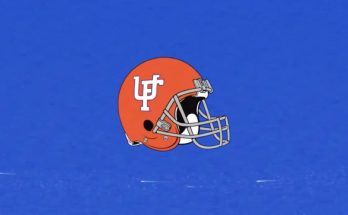Notre Dame and USC have shared one of the most storied rivalries in college football. The annual clash between the Fighting Irish and Trojans has consistently been a marquee matchup, a spectacle filled with history, passion, and a sense of tradition. It represents a battle between two of the most prestigious programs in college football, with roots that stretch back more than a century. However, a recent scheduling development has raised concerns about the future of this iconic rivalry.
The rivalry between Notre Dame and USC dates back to 1926, and over the years, it has become one of the most anticipated games of each college football season. The two teams have faced off in every season since 1946, with the exception of a few instances during World War II. The rivalry has produced countless memorable moments, from dramatic finishes to unforgettable performances by some of the greatest players in college football history. The competition between the two programs goes beyond the field, with both fanbases intensely passionate and loyal to their respective schools.
However, the landscape of college football is evolving rapidly, and the future of traditional rivalries is in question. The rise of conference realignment, the proliferation of new television contracts, and the growing influence of the College Football Playoff have led to shifts in the scheduling models of many schools. Notre Dame, as an independent school, has found itself at a crossroads in this new environment.
For decades, the Fighting Irish have maintained their status as an independent program, refusing to join a conference while still playing a nationally competitive schedule. Notre Dame’s independence has been part of its identity, allowing the school to maintain rivalries with traditional powerhouses like USC, Michigan, and Stanford, while also scheduling games against top programs from around the country. The USC game, in particular, has always been one of the most important dates on the calendar for Notre Dame fans, and it has held immense significance for both schools.
However, in recent years, Notre Dame’s scheduling philosophy has begun to shift. With the evolving college football landscape, the Fighting Irish have found it increasingly difficult to maintain a full schedule of competitive games as an independent. The demands of modern college football — including the need for television revenue and playoff considerations — have placed greater pressure on the program to schedule games against other high-profile teams. This shift has led Notre Dame to strike more frequent scheduling agreements with other major programs, but it has also meant that some of the school’s most cherished rivalries have been put in jeopardy.
The situation with USC is particularly concerning. The rivalry with the Trojans has always been one of the most important games on Notre Dame’s schedule, not just for the history and tradition of the matchup but also for the recruiting implications. A win over USC is a huge boost for any program, especially in the highly competitive Southern California recruiting landscape. The game also serves as a barometer for both programs, as they are often ranked near each other in the national polls. For USC, the Notre Dame game is one of the cornerstones of their season, and losing that annual battle would mark the end of an era.
One of the key factors threatening the future of the Notre Dame-USC rivalry is the evolving landscape of conference realignment. In the past decade, several conferences have undergone significant changes, with programs moving from one conference to another in search of greater revenue, better competition, or improved television exposure. The Big Ten and SEC have been the most active in reshaping college football’s landscape, with several schools joining or leaving conferences in a wave of realignment.
Notre Dame has largely remained unaffected by this wave of change, primarily due to its status as an independent program. However, the increasing influence of the power conferences has put more pressure on Notre Dame to align itself with a conference. The Fighting Irish have been courted by the ACC, Big Ten, and other conferences, with many suggesting that Notre Dame may eventually be forced to join one of these leagues in order to remain competitive and secure a spot in the College Football Playoff.
Joining a conference could lead to a reduction in the number of games Notre Dame schedules as an independent. The Fighting Irish are already part of the ACC for most sports, but their football program remains independent. Should Notre Dame choose to align itself with a conference, it is likely that some of its traditional rivalries would have to be adjusted or even eliminated to accommodate conference schedules. This would include the annual game against USC, as conference opponents would take priority, and the Fighting Irish would no longer have the flexibility to schedule these historic matchups.
Another factor contributing to the uncertainty of the rivalry is the growing importance of television contracts. Television revenue plays an increasingly crucial role in college football’s financial structure, and schools and conferences are keenly aware of the need to secure lucrative media deals. In this environment, schools that can provide the most valuable television product are in high demand, and games that generate the most viewership are prioritized. For Notre Dame, maintaining its status as an independent school has allowed it to negotiate its own media deals, but it also faces the challenge of competing with the immense television contracts offered by conferences like the Big Ten and SEC.
The USC rivalry has long been one of the most-watched games of the season, but as the landscape of college football continues to change, it is unclear whether the game will remain as central to Notre Dame’s scheduling strategy. The NCAA’s decision to expand the College Football Playoff to 12 teams has also shifted the focus of college football scheduling. Schools are increasingly focused on strengthening their resumes to earn a spot in the expanded playoff, and this may lead to fewer non-conference games with traditional rivals like USC, particularly if those games are viewed as less essential for playoff qualification.
There is also the question of whether USC itself will maintain its commitment to the rivalry. The Trojans, like many other programs, are facing increasing pressure to schedule games that will improve their playoff chances and maximize their television revenue. As USC transitions to the Big Ten, the demands of conference play will increase, and the Trojans may have to reevaluate which non-conference games are the most beneficial for their program. While USC has always been a staunch supporter of the rivalry with Notre Dame, the evolving dynamics of college football could lead to a scenario where the game is no longer a priority.
Despite the uncertainty surrounding the future of the rivalry, there is still hope that Notre Dame and USC will continue to meet on the field for years to come. The traditions of both schools are deeply intertwined with this annual matchup, and the passion of the fanbases ensures that the rivalry remains one of the most significant in the sport. There is no question that the game means a great deal to both programs, and that commitment could potentially overcome the challenges posed by the changing landscape of college football.
In the end, the future of the Notre Dame-USC rivalry hinges on a variety of factors, including the decisions made by Notre Dame’s administration, the direction of college football scheduling, and the evolving nature of television contracts and playoff considerations. While there are reasons to be concerned about the rivalry’s future, the hope remains that the tradition of this historic matchup will continue, and that Notre Dame and USC will once again meet on the gridiron for what has long been one of the most anticipated games of the college football season.



